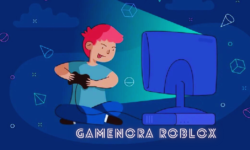In the vast landscape of video games, certain titles stand out not just for their gameplay mechanics but for their cultural impact and enduring popularity. Among these, Ms. Pac-Man holds a special place. Since its release in 1981, Ms. Pac-Man has captivated audiences worldwide, becoming a symbol of retro gaming and a testament to the timeless appeal of simple yet engaging gameplay. In this article, we’ll delve into the history, mechanics, legacy, and enduring relevance of Ms. Pac-Man.
The Genesis of Ms. Pac-Man
Ms. Pac-Man, developed by Namco and distributed by Midway, emerged as the sequel to the immensely popular arcade game Pac-Man. Released in 1981, Ms. Pac-Man introduced several innovations to the Pac-Man formula, including new maze designs, faster gameplay, and the introduction of cutscenes, which added depth to the game’s narrative.
Gameplay Mechanics
At its core, Ms. Pac-Man retains the fundamental gameplay mechanics of its predecessor. Players control Ms. Pac-Man, guiding her through maze-like levels while avoiding ghosts and consuming pellets. However, the introduction of multiple mazes and varying ghost behaviors added complexity and depth to the gameplay experience. The addition of fruit bonuses and energizers further enhanced the game’s replay value, challenging players to achieve higher scores with each playthrough.
Cultural Impact and Legacy
Ms. Pac-Man quickly became a cultural phenomenon, transcending the realm of gaming to leave an indelible mark on popular culture. From merchandise and apparel to animated television series and even a hit song (“Pac-Ma’n Fever” by Buckner & Garcia), Ms. Pac-Ma’n permeated every aspect of 1980s pop culture. Its influence extended beyond the gaming industry, inspiring a generation of gamers and solidifying its status as an icon of the arcade era.
Enduring Relevance in the Digital Age
Despite the passage of time and the emergence of technologically advanced gaming platforms, Ms. Pac-Ma’n continues to enjoy widespread popularity. Its accessibility, addictive gameplay, and nostalgic appeal have ensured its longevity in an ever-changing gaming landscape. Moreover, Ms. Pac-Man’s presence on modern platforms such as smartphones, gaming consoles, and online emulators has introduced the classic title to new generations of players, preserving its legacy for years to come.
Ms. Pac-Man in Popular Media
Over the years, Ms. Pac-Ma’n has made numerous appearances in popular media, further solidifying her status as a cultural icon. From cameo appearances in television shows and films to references in music videos and literature, Ms. Pac-Man’s influence extends far beyond the confines of the gaming world. Her timeless appeal and recognizable design continue to resonate with audiences worldwide, ensuring her place in the annals of pop culture history.
The Future of Ms. Pac-Man
As we look to the future, one thing is certain: Ms. Pac-Man’s legacy will endure for generations to come. Whether through classic arcade cabinets, modern gaming platforms, or nostalgic tributes, Ms. Pac-Ma’n will continue to capture the hearts and minds of gamers young and old. With each new iteration and adaptation, the iconic yellow character will reaffirm her status as one of gaming’s most beloved icons, reminding us of the enduring power of simple yet compelling gameplay.
Conclusion
Ms. Pac-Ma’n stands as a shining example of the timeless appeal of classic arcade games. From its humble beginnings in the early 1980s to its enduring relevance in the digital age, Ms. Pac-Ma’n has transcended the boundaries of gaming to become a cultural phenomenon. Its simple yet addictive gameplay mechanics, coupled with its iconic characters and memorable music, have secured its place in gaming history. As we celebrate the legacy of Ms. Pac-Ma’n, we are reminded of the profound impact that video games can have on popular culture and society as a whole.









